I recently wrote an article, ” Bullying in Our Schools Must Stop !!! “, that stemmed from the tragic, teen suicide of Phoebe Prince who was targeted by her classmates and bullied. As a parent of a pre-teen, writing this article drew my attention to the many personal struggles and social issues facing teens today. I got to talking about these matters with Caitlin Doggart from Where The Sidewalk Ends bookstore in Chatham, Massachusetts. Caitlin recommended a book called Reality Gap written by Stephen Wallace.
Stephen Wallace is CEO of the SADD organization and a renowned psychologist, author, speaker, and consultant on adolescent behavior.
His book, Reality Gap combines new research and statistics with real life stories describing what it’s like to be a teenager in today’s society. He details the adolescent decision making process and offers up ideas and techniques that parents and mentors can use to aid teens in understanding and making positive choices. Wanting to learn more, I contacted Mr. Wallace to ask him if he’d be willing to to a Q&A for our readers. He agreed
An Interview with Stephen Wallace
ATNE: What are the greatest fears and worries facing teens today?
SW: Believe it or not, they are basically the same ones teens have been worried about for years … making and keeping friends, figuring out what they want to do when they grow up, getting into college, etc. Of course, many also worry about the prevalence of alcohol and drug use among their peers.
ATNE: What can families and schools do to help teens with these issues?
SW: Talk. Teens want to know what their parents and schools expect of them. All of the research we have done over the past ten years points to the incredibly powerful role of open, honest dialogue in helping teens to make good, safe, healthy choices.
ATNE: Can you elaborate on your experience as director and CEO of the SADD organization?
SW: Currently, I serve as chairman and chief executive officer of the national SADD (Students Against Destructive Decisions) organization, which represents approximately 10,000 SADD programs in schools and communities across the country. In this role, I travel extensively speaking to young people, parents, and educators. I also oversee SADD’s research program, sponsored by Liberty Mutual Insurance Company, and write frequent newspaper columns (opinion editorials) about issues facing young people and families today.
In August of 2008, I published a book based on SADD’s research with teens and parents: Reality Gap – Alcohol, Drugs, and Sex … What Parents Don’t Know and Teens Aren’t Telling. It is available online at Amazon and in Barnes & Noble stores, as well as through independent booksellers.
ATNE: What impact has the SADD program had on the youth of today?
SW: I think SADD has had a big impact. Since it was founded in 1981 as Students Against Driving Drunk, the number of young people killed in alcohol related car crashes has been reduced by about 60 percent. SADD is also a “place” (literal and figurative) where young people can find other kids who want to have a good time without making choices their parents don’t want them to make. At it’s core SADD is, and has always been, about young people taking responsibility for their own behaviors and taking responsibility to help their friends make good choices. Looking out for each other is what it’s all about.
ATNE: What teen issues do you feel our society improved upon and where do we still need to focus more?
SW: Well, I already mentioned the progress made on impaired driving issues – which continue to warrant discussion. Frankly, I think the biggest issue that needs to be worked on is underage drinking. I recently wrote a column called “Equivocation” pointing out that adult ambivalence about kids using alcohol puts them at risk. Young people use alcohol more heavily and more frequently than all other drugs combined and it is linked to alcohol poisoning, car crash deaths, unwanted sexual behavior, sexual assault, other forms of violence, and depression. It is an epidemic that gets far too little serious attention from adults, I believe.
ATNE: How much of a role does media and advertising play in the decision making of teens? How can we encourage our children to be free thinkers?
SW: It plays a major role. This is an area I have been studying since I was an undergraduate. And I dedicate a whole chapter in my book to discussing what I have learned (“Weapons of Mass Persuasion”). In that chapter, I encourage parents to teach their teens to become “media literate” – which basically helps them to sort out fact from fiction in advertising and helps them to become critical (and perhaps “free”) thinkers.
ATNE: Our community is currently mourning the loss of Phoebe Prince who committed suicide as a result of mounting social pressures and bullying. Currently, Massachusetts does not have an Anti-Bullying law. What are your thoughts on this and what actions do you feel our schools and families should be taking to put and end to bullying in out schools?
SW: You are correct that bullying is a big problem. I point out in Reality Gap that a study by the Kaiser Family Foundation and Nickelodeon found that 74 percent of 8-11 year olds and 86 percent of 12-15 year olds say teasing and bullying occurs in their schools. Most characterize them as “big problems.”
According to the Department of Justice, “Bullying encompasses a variety of negative acts carried out repeatedly over time. It involves a real or perceived imbalance of power, with the more powerful child or group attacking those who are less powerful. It does not matter which form bullying takes for it to be harmful.”
Bullying can take three forms.
• PHYSICAL (hitting, kicking, spitting, pushing, taking
personal belongings)
• VERBAL (taunting, malicious teasing, name-calling, making threats)
• PSYCHOLOGICAL (spreading rumors, encouraging social exclusion, extortion, intimidation)
Dr. Joel Haber – and expert on bullying whose workshops I have attended says that anti-bullying policies at school are great but have to be followed through on with action. In other words, the perpetrators of bullying need to be punished. He also points out how important it is that we teach kids say something when they see someone being victimized.
ATNE: Another growing concern surrounding bullying is cyber bullying through text messaging and social networks such as Facebook. Currently you have to be 13years of age or older to have a Facebook account. Do you feel this age should be raised and should parents be held accountable for their child’s actions?
SW: Cyber Bullying can have terrible outcomes, as we saw here in Massachusetts recently. I think parents need to monitor their child’s Internet use, including what they are doing on social networking sites.
ATNE: Tell us more about your involvement in the Cape Cod Sea Camps program. How are these programs benefiting teens?
SW: Our programs benefit teens and all of the children by providing meaningful outlets for physical, social, and artistic expression and by creating opportunities for them to meet and live with other children from all across the country and around the world. Our teen leadership program provides specific training in camp activity areas (such as sailing and swimming), counseling courses that teach them how to work with younger kids, and American Red Cross course work for certifications.
ATNE: What is the most important bit of advice you can give parents raising teens today?
SW: That you still count! Many parents believe that they have little influence over their adolescent children. Nothing could be further from the truth. Teens Today research from SADD points out that the majority of teens very much value their relationships with their parents, which runs somewhat counter to the popular image of teens as disaffected with and distrusting of their parents.
Teens Today research from SADD points out that the majority of teens very much value their relationships with their parents, which runs somewhat counter to the popular image of teens as disaffected with and distrusting of their parents. Most teens say their relationships with their parents make them feel good about themselves (82 percent), their parents respect them (68 percent), and they feel close to their parents (60 percent). And research from ORC actually says that a significant number of teens say they want to spend more time with their parents!
ATNE: What are your hopes for a better tomorrow?
I was just talking to students at the Hackley School in Tarrytown, NY about this. My hope is that more young people will adopt the SADD model of looking out for each other, helping their friends to make smart choices rather than ones that might jeopardize their health and safety. That may sound Pollyannaish but it has been the driving force behind SADD for almost thirty years, a force that has helped to save thousands and thousands of young lives.
____
Stephen Wallace’s training is as a school psychologist. Although he no longer practices in schools, Stephen is still very much involved with young people. In addition to his work with SADD, Wallace is a summer camp director at Cape Cod Sea Camps in Brewster, Massachusetts where he helps run the resident part of the program. He also is director of the camps teen leadership program and writes training materials for the camp’s counselors. Stephen Wallace also writes for the camping industry’s professional magazine and has taught a number of psychology courses at Mount Ida College in Newton, Massachusetts.
By day, Stephen manages a marketing, communications, and government relations consulting practice in Boston. When asked what he is most proud of in his life, he will tell you it is the relationships he has established with young people over the past thirty years. Thank you, Stephen, for all that you have done and are continuing to do to help families and teens today!
To learn more about Stephen Wallace, his speaking schedule, columns and articles, or to sign up for his free e-newsletter visit him at http://stephengraywallace.com/
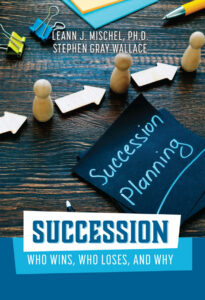 Succession offers “user’s guide” to small and family owned businesses through the stages of planning, employment. and ownership policies, shareholder meetings, family health emergencies, business planning, and alignment/engagement of employees. Covering both the positives and potential pitfalls inherent in the planning and implementation process, Succession represents a realistic roadmap to one of the more difficult periods of business ownership.
Succession offers “user’s guide” to small and family owned businesses through the stages of planning, employment. and ownership policies, shareholder meetings, family health emergencies, business planning, and alignment/engagement of employees. Covering both the positives and potential pitfalls inherent in the planning and implementation process, Succession represents a realistic roadmap to one of the more difficult periods of business ownership.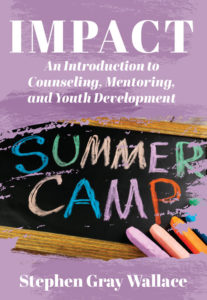 Stephen’s new book, IMPACT – An Introduction to Counseling, Mentoring, and Youth Development, offers insightful commentary on the important role of mentors in the lives of children and teens. While it specifically addresses camp counselors, it is equally relevant for all key youth influencers, including parents, teachers, and coaches. …
Stephen’s new book, IMPACT – An Introduction to Counseling, Mentoring, and Youth Development, offers insightful commentary on the important role of mentors in the lives of children and teens. While it specifically addresses camp counselors, it is equally relevant for all key youth influencers, including parents, teachers, and coaches. … This is an important time in teenagers’ lives — when they will develop driving habits that can be good and bad. Parents need to take an active role in helping teens develop safe driving behaviors because teenagers are involved in more car accidents than any other age group. …
This is an important time in teenagers’ lives — when they will develop driving habits that can be good and bad. Parents need to take an active role in helping teens develop safe driving behaviors because teenagers are involved in more car accidents than any other age group. …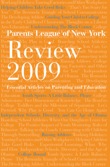 The Parents League Review is an annual literary journal with articles on parenting and education.
The Parents League Review is an annual literary journal with articles on parenting and education.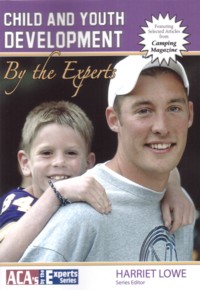 Child and Youth Development features eighteen articles that have been carefully selected from past editions of Camping Magazine, including Rites of Passage: Camp Pays Off in Youth Development, Happiness, Health, and Safety,” written by SADD Chairman and CEO Stephen Wallace. The contributing writers are recognized as authoritative voices in the field of child and youth development. Produced in cooperation with the American Camp Association. …
Child and Youth Development features eighteen articles that have been carefully selected from past editions of Camping Magazine, including Rites of Passage: Camp Pays Off in Youth Development, Happiness, Health, and Safety,” written by SADD Chairman and CEO Stephen Wallace. The contributing writers are recognized as authoritative voices in the field of child and youth development. Produced in cooperation with the American Camp Association. … This new book gives high school students the inside scoop on figuring out who they are and where they want to go by offering teens the kind of comprehensive, down-to-earth advice they need and want. …
This new book gives high school students the inside scoop on figuring out who they are and where they want to go by offering teens the kind of comprehensive, down-to-earth advice they need and want. … LOVE THAT BOY is a uniquely personal story about the causes and costs of outsized parental expectations. What we want for our children—popularity, normalcy, achievement, genius—and what they truly need—grit, empathy, character—are explored by National Journal’s Ron Fournier, who weaves his extraordinary journey to acceptance around the latest research on childhood development and stories of other loving-but-struggling parents.
LOVE THAT BOY is a uniquely personal story about the causes and costs of outsized parental expectations. What we want for our children—popularity, normalcy, achievement, genius—and what they truly need—grit, empathy, character—are explored by National Journal’s Ron Fournier, who weaves his extraordinary journey to acceptance around the latest research on childhood development and stories of other loving-but-struggling parents. 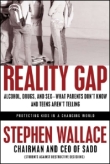 Reality Gap paints an alarming portrait of a modern-day adolescence filled with potentially deadly behaviors carefully hidden from the view of parents and other adults. But it is also a book about hope and inspiration, pointing to the incredibly powerful role that parents and other mentors can play in the lives of young people and highlighting the tremendous contributions that many teens are making to their families, schools, and communities. …
Reality Gap paints an alarming portrait of a modern-day adolescence filled with potentially deadly behaviors carefully hidden from the view of parents and other adults. But it is also a book about hope and inspiration, pointing to the incredibly powerful role that parents and other mentors can play in the lives of young people and highlighting the tremendous contributions that many teens are making to their families, schools, and communities. …